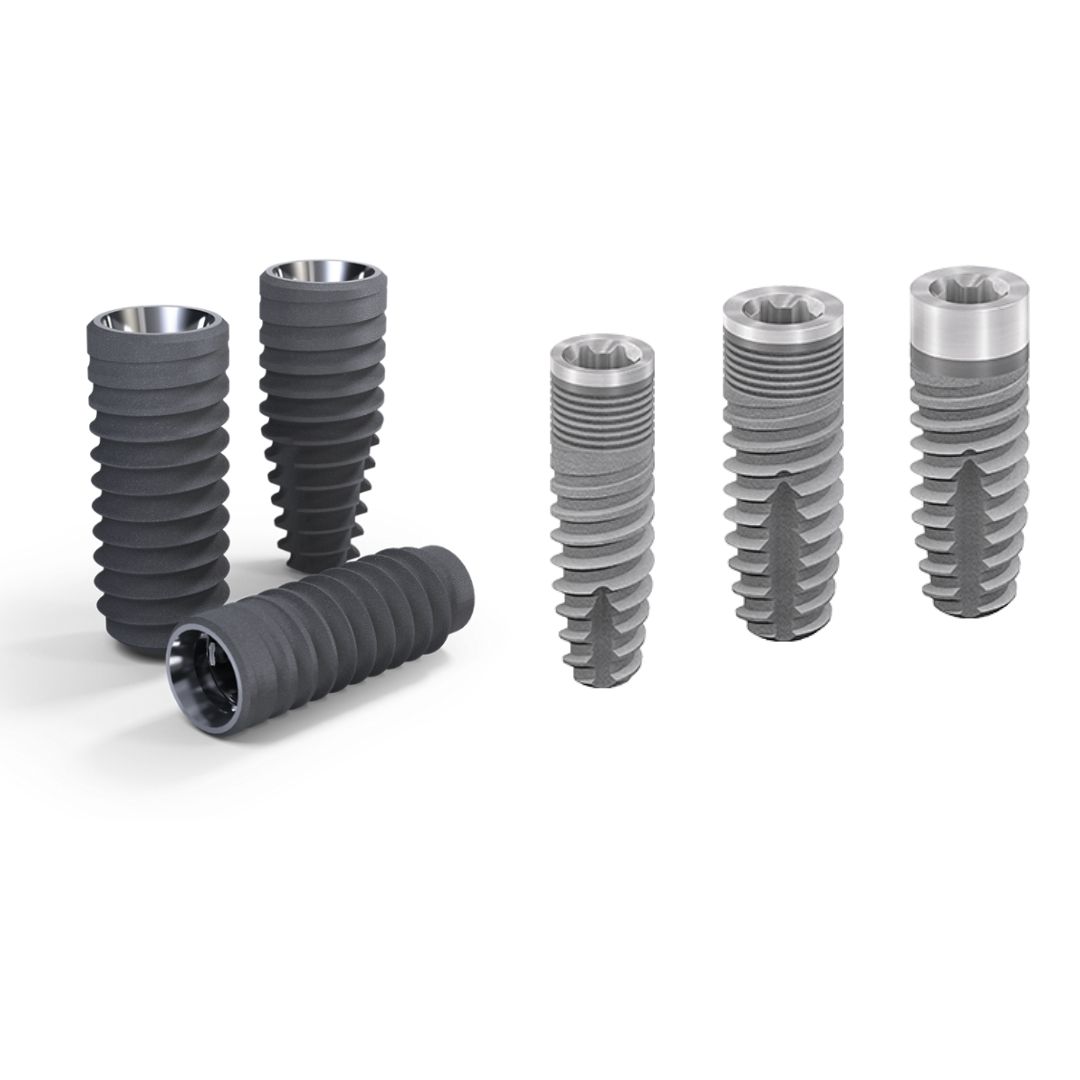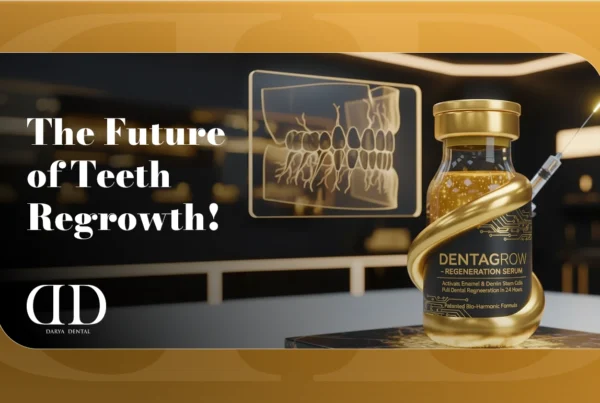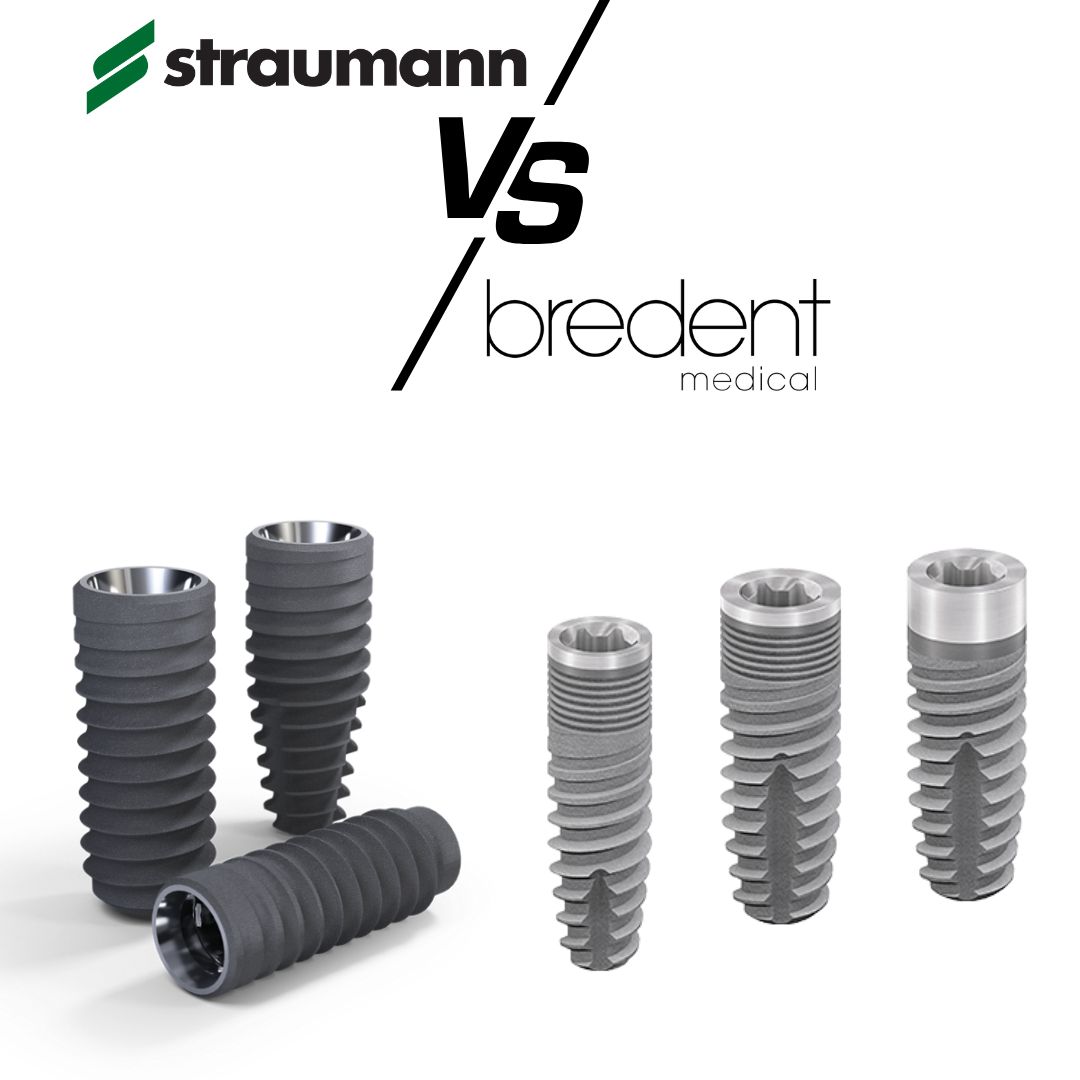
When considering dental implants, selecting the right brand can significantly impact the success of your treatment. At Darya Dental Clinic, we specialize in providing premium dental implant solutions, including both Bredent and Straumann systems. This article compares these leading implant brands to help you make an informed decision about your dental restoration journey.
Understanding Dental Implant Systems
Dental implants serve as artificial tooth roots, providing a permanent base for fixed replacement teeth. The quality of implant systems varies significantly between manufacturers, affecting everything from integration success rates to long-term stability and aesthetic outcomes.
Bredent Implant Systems Overview
History and Development
Bredent, a German dental company, has been in the market since 1974 and introduced its innovative implant systems with a focus on immediate loading protocols and aesthetic restorations.
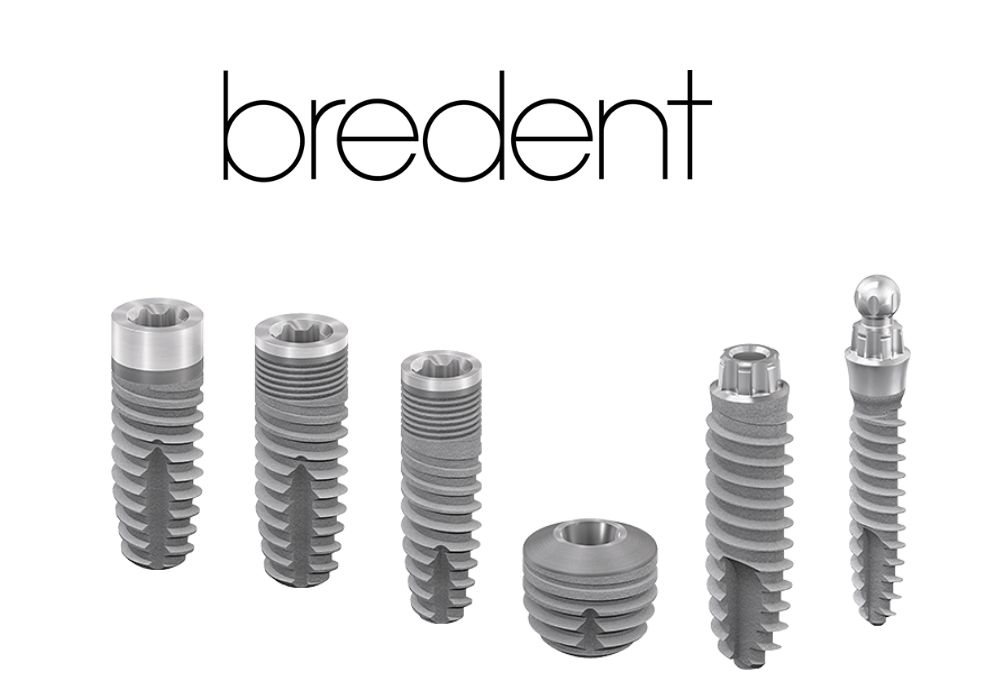
Key Features of Bredent Implants
Bredent implants are characterized by their unique one-piece design and special surface treatment technology. The SKY implant system from Bredent is particularly noted for its versatility in various clinical situations.
Advantages of Bredent Systems
- Bluish titanium surface that promotes excellent osseointegration
- Specialized for immediate loading protocols
- Outstanding aesthetic results with their unique emergence profile design
- Cost-effective compared to some premium brands
- Excellent for single-tooth replacements and partial restorations
Limitations of Bredent Implants
- Less extensive research literature compared to older established brands
- Narrower range of prosthetic components
- Limited global distribution network
Straumann Implant Systems Overview
History and Innovation
Founded in 1954 in Switzerland, Straumann has pioneered many advancements in dental implantology. Their implant systems are supported by decades of scientific research and development.
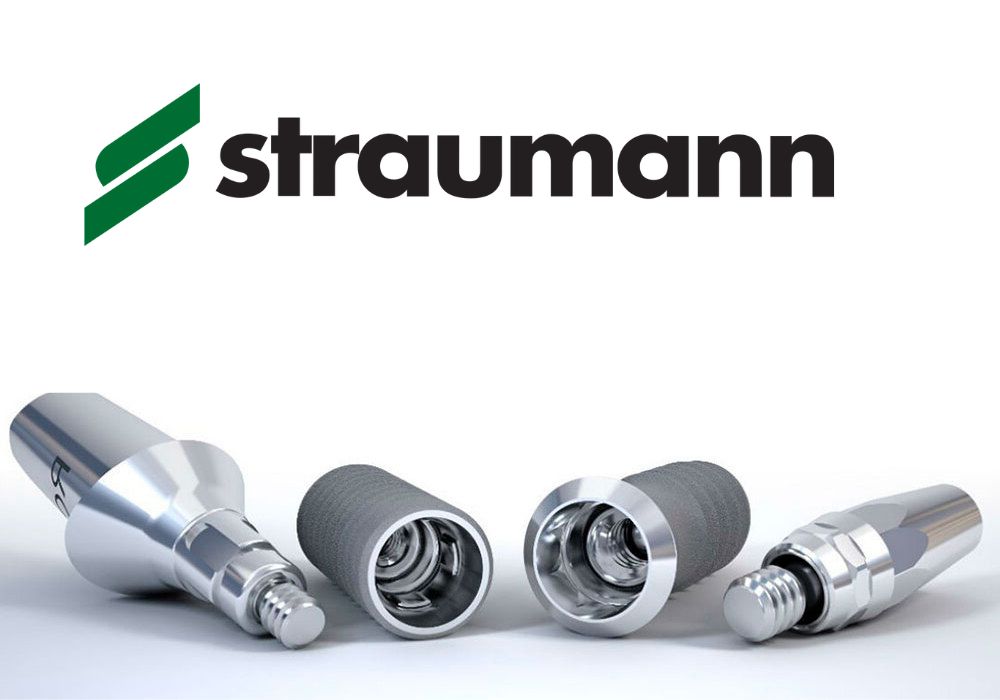
Key Features of Straumann Implants
Straumann’s implant systems feature their proprietary Roxolid® material and SLActive® surface technology, designed to enhance osseointegration and reduce healing time.
Advantages of Straumann Systems
- Extensive clinical documentation with studies spanning several decades
- Industry-leading success rates of up to 98.8% over 10+ years
- Versatile implant lines addressing various clinical needs
- Comprehensive prosthetic options for all types of restorations
- Global support network with widespread availability of components
Limitations of Straumann Implants
- Premium pricing structure
- Steeper learning curve for some specialized components
- May be overengineered for simpler clinical cases
Clinical Comparison: Bredent vs Straumann
Osseointegration Performance
Both systems demonstrate excellent osseointegration capabilities. Straumann’s SLActive surface shows faster initial integration, while Bredent’s surface treatment offers comparable long-term stability.
Aesthetic Outcomes
Bredent excels in immediate aesthetic solutions, particularly in the anterior region. Straumann offers exceptional aesthetic results with their Bone Level implants and comprehensive prosthetic portfolio.
Long-term Reliability
Straumann implants have more extensive long-term clinical documentation, with studies showing consistent performance over 15+ years. Bredent systems demonstrate promising results in medium-term studies.
Making the Right Choice for Your Needs
Patient-Specific Considerations
The ideal implant system depends on your specific clinical situation, including:
- Bone quality and quantity
- Aesthetic requirements
- Loading protocol preferences
- Budget considerations
How We Choose at Darya Dental Clinic
At Darya Dental Clinic, our experts evaluate each case individually to recommend the most appropriate implant system. We consider the unique anatomy of each patient, desired outcomes, and long-term maintenance factors.
Final Toughts
Both Bredent and Straumann represent excellent choices for dental implants, each with distinct advantages. While Straumann offers unmatched clinical documentation and global support, Bredent provides innovative solutions for specific clinical scenarios at a more accessible price point. At Darya Dental Clinic in Turkey, we offer both systems and can guide you through selecting the option that best suits your individual needs for a successful dental implant journey.
FAQs
Which implant system has better success rates: Bredent or Straumann?
Straumann has documented success rates of up to 98.8% over 10+ years, while Bredent shows comparable clinical success in medium-term studies of 5-7 years.
Are Bredent implants suitable for immediate loading procedures?
Yes, Bredent implants are specifically designed for immediate loading protocols, making them excellent choices for same-day tooth replacement procedures.
How does the cost of Bredent compare to Straumann implants?
Bredent implants typically cost 15-30% less than Straumann, making them a more cost-effective premium option without significantly compromising quality.
Which implant system provides better aesthetic results in the front teeth area?
Both systems offer excellent aesthetic solutions, with Bredent having certain advantages for immediate aesthetic cases and Straumann excelling in complex aesthetic rehabilitations.
What is Straumann's Roxolid material and how does it benefit patients?
Roxolid is Straumann's titanium-zirconium alloy that offers greater strength than pure titanium, allowing for narrower implants that preserve more bone and are less invasive.
How long is the healing period for Bredent compared to Straumann implants?
Straumann's SLActive surface can reduce healing times to 3-4 weeks in appropriate cases, while Bredent typically requires 6-8 weeks for complete osseointegration.
Can Bredent and Straumann components be used interchangeably?
No, these systems are not compatible with each other. Each system requires its specific components for proper fit and function.
Which implant system is better for patients with reduced bone volume?
Straumann offers specialized narrow-diameter implants (2.9mm) with their Roxolid material for cases with limited bone, while Bredent provides effective short implant options for vertical bone limitations.
How does the warranty differ between Bredent and Straumann implant systems?
Straumann typically offers a lifetime warranty on their implants, while Bredent provides a 10-year warranty with specific conditions. Both warranties require regular maintenance and follow-up care.
References
- Straumann Group. (2023). Straumann® Dental Implant System: Scientific Evidence. 5th Edition. Basel, Switzerland: Institut Straumann AG.
- Bredent Medical GmbH & Co. KG. (2022). SKY Implant System: Clinical Documentation. Senden, Germany: Bredent Medical.
- Buser, D., Sennerby, L., & De Bruyn, H. (2017). Modern implant dentistry based on osseointegration: 50 years of progress, current trends and open questions. Periodontology 2000, 73(1), 7-21.
- Szmukler-Moncler, S., Salama, H., Reingewirtz, Y., & Dubruille, J. H. (2012). Timing of loading and effect of micromotion on bone-dental implant interface: review of experimental literature. Journal of Biomedical Materials Research, 43(2), 192-203.
- Degidi, M., Daprile, G., & Piattelli, A. (2017). Primary stability determination of implants inserted in sinus augmented sites: 1-step versus 2-step procedure. Implant Dentistry, 22(1), 36-41.
- Raghavendra, S., Wood, M. C., & Taylor, T. D. (2005). Early wound healing around endosseous implants: a review of the literature. International Journal of Oral & Maxillofacial Implants, 20(3), 425-431.
- Wennerberg, A., & Albrektsson, T. (2009). Effects of titanium surface topography on bone integration: a systematic review. Clinical Oral Implants Research, 20(s4), 172-184.
- Rupp, F., Liang, L., Geis-Gerstorfer, J., Scheideler, L., & Hüttig, F. (2018). Surface characteristics of dental implants: A review. Dental Materials, 34(1), 40-57.
- Schwarz, F., Alcoforado, G., Nelson, K., Schaer, A., Taylor, T., Beuer, F., & Strietzel, F. P. (2019). Impact of implant–abutment connection, positioning of the machined collar/microgap, and platform switching on crestal bone level changes. Clinical Oral Implants Research, 30(8), 707-720.
- Chappuis, V., Buser, R., Brägger, U., Bornstein, M. M., Salvi, G. E., & Buser, D. (2018). Long-term outcomes of dental implants with a titanium plasma-sprayed surface: A 20-year prospective case series study in partially edentulous patients. Clinical Implant Dentistry and Related Research, 15(6), 780-790.
- Karl, M., & Albrektsson, T. (2017). Clinical performance of dental implants with a moderately rough (TiUnite) or smooth surface: A systematic literature review. International Journal of Oral & Maxillofacial Implants, 32(3), 667-681.
- Lang, N. P., & Berglundh, T. (2011). Periimplant diseases: where are we now? Consensus of the Seventh European Workshop on Periodontology. Journal of Clinical Periodontology, 38(Suppl. 11), 178-181.
- Östman, P. O., Hellman, M., & Sennerby, L. (2012). Direct implant loading in the edentulous maxilla using a bone density-adapted surgical protocol and primary implant stability criteria for inclusion. Clinical Implant Dentistry and Related Research, 7(s1), S60-S69.
- Albrektsson, T., & Wennerberg, A. (2019). On osseointegration in relation to implant surfaces. Clinical Implant Dentistry and Related Research, 21(S1), 4-7.
- Terheyden, H., Lang, N. P., Bierbaum, S., & Stadlinger, B. (2012). Osseointegration–communication of cells. Clinical Oral Implants Research, 23(10), 1127-1135.


